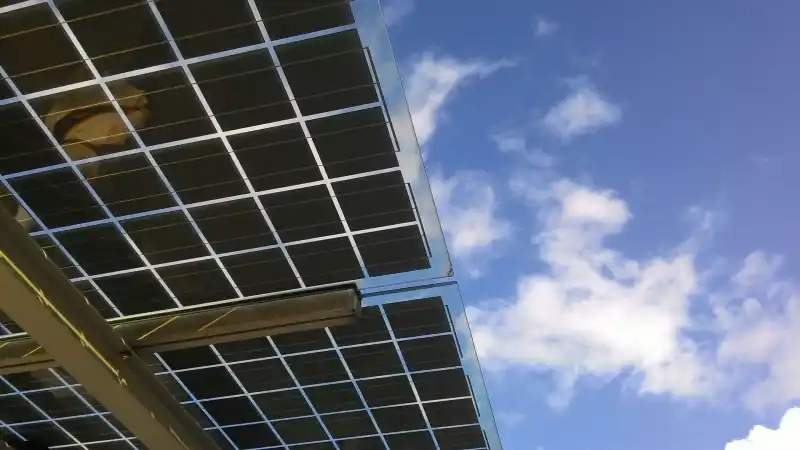Disclosure: This post may contain affiliate links, meaning we get a commission if you decide to make a purchase through our links, at no cost to you. Please read our disclosure for more info.
Environmental sustainability has become a key focus in modern architectural design. As the world deals with climate change and dwindling natural resources, the architectural industry is under increasing pressure to adopt eco-friendly practices. Sustainable architecture not only reduces environmental impact but also enhances the quality of life for building occupants. Moving towards greener architectural practices is not just a trend; it’s a necessary change driven by a global call for a more resilient and sustainable future.
In this article, we’ll explore different aspects of sustainable architecture, starting with the basic principles like energy efficiency and water conservation. We’ll also look at innovative building materials and technologies that support sustainability, and discuss architectural design services and design strategies that promote eco-friendly construction, as well as the challenges architects face. Finally, we’ll cover the future of sustainable architectural design, examining trends and potential advancements that could reshape our built environment.
In This Post:
The Principles of Sustainable Architecture
Sustainable architecture focuses on energy efficiency, water conservation, and using renewable materials. By emphasizing these aspects, architects design buildings that use less power, conserve water, and include materials that are renewable or have a low environmental impact. Common design features include natural lighting, passive heating and cooling, and rainwater harvesting. Construction practices favor locally sourced, sustainable materials.
This approach reduces a building’s environmental footprint and creates healthier indoor spaces. The industry is increasingly using lifecycle assessments to measure a building’s long-term sustainability and adapting to new green building regulations. Incorporating these principles from design to construction promotes a resilient and sustainable built environment.
Innovative Building Materials and Technologies
Innovative building materials and new technologies are transforming construction by promoting sustainability like never before. Eco-friendly materials like recycled steel, bamboo, and low-VOC paints help protect the environment, while smart technologies such as energy-efficient HVAC systems and intelligent lighting cut down on energy use. These improvements not only reduce buildings’ carbon footprints but also make them more durable and efficient.
Some experts support the widespread use of net-zero energy buildings, which generate as much energy as they use, pushing for a more sustainable future. However, critics point out that the high initial costs and technological challenges can be significant obstacles. Despite these concerns, the use of these innovations is becoming essential for sustainable development in architecture, balancing short-term costs with long-term benefits for the environment and communities.
Design Strategies for Sustainable Architecture
Different design strategies are key to creating sustainable buildings, each with its own advantages. Passive design uses the natural climate to keep buildings comfortable, reducing the need for heating or cooling systems. This can involve placing windows to maximize sunlight or using materials that store heat. Bioclimatic architecture goes further by considering the regional climate and environment during the design process, creating buildings that work well with their local surroundings.
Incorporating environmental features into building plans greatly improves a building’s ecological balance. Using native plants, green roofs, and vertical gardens not only makes buildings more attractive but also boosts biodiversity, manages stormwater, and improves air quality. Combining these strategies results in buildings that are energy-efficient and support the natural environment.
Challenges and Barriers to Sustainable Practices
Despite the clear benefits of sustainable architecture, several challenges prevent its widespread adoption. Financial constraints are a major issue, as eco-friendly materials and advanced technologies can be expensive, discouraging both architects and clients. Regulatory problems also play a role; inconsistent building codes and zoning laws can make it difficult to implement green practices.
Additionally, there’s a need for more education and awareness among builders, policymakers, and the public. Many professionals lack the training to use sustainable methods effectively, and public awareness campaigns are vital for promoting environmental responsibility. Architects also face the challenge of balancing modern design preferences with sustainable principles. While some believe these obstacles can be overcome with effort and collaboration, others argue that significant changes are needed to make sustainability the standard practice.
The Future of Sustainable Architectural Design
The future of sustainable architectural design is set to bring exciting advancements driven by innovation and necessity. Trends show a move towards including more natural elements, making buildings functional and in harmony with nature. New technologies like 3D-printed structures from sustainable materials, energy-generating solar windows, and AI-driven building management systems are coming.
Architects will not only design but also advocate for and educate about sustainability principles. As environmental challenges grow, creating sustainable buildings becomes a global imperative. Despite financial and regulatory challenges, there is immense potential for groundbreaking changes through collective effort and technology. Architects will continue to lead the way in creating environmentally and human-friendly buildings, marking a new era in sustainable design.
Conclusion
Adopting sustainable architectural practices is necessary for addressing the pressing environmental challenges of our time. By integrating energy efficiency, innovative materials, and eco-friendly design strategies, architects can reduce the environmental footprint of buildings. Overcoming financial, regulatory, and educational barriers is essential to make sustainable architecture the norm rather than the exception. The future promises exciting advancements and a deeper integration of nature and technology, positioning architects as key advocates for a more resilient and sustainable built environment.


